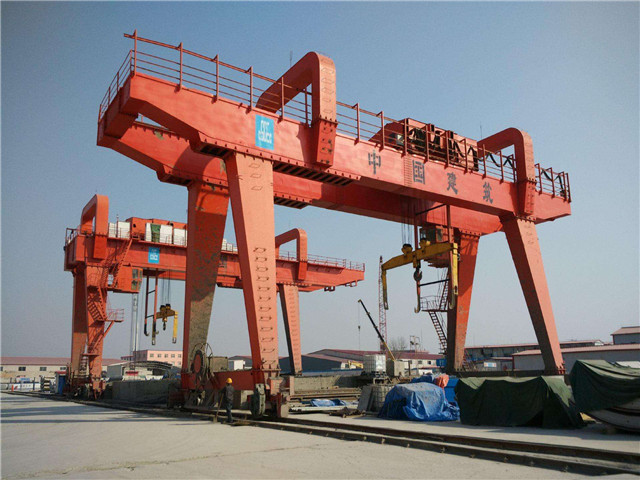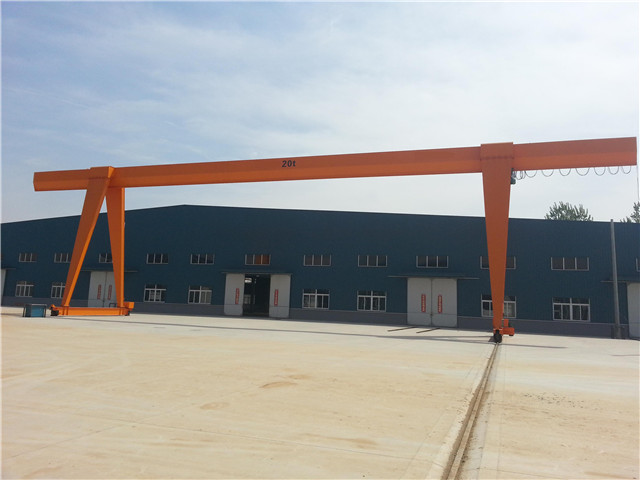Rail-mounted gantry cranes (RMG) are powerful lifting machines that play a pivotal role in various industries, most notably in container handling at ports and intermodal terminals. This guide offers a detailed insight into how RMG cranes function, shedding light on their components, movements, and key operational principles.

I. Components of a Rail-Mounted Gantry Crane:
1. Main Frame and Girders:
The main frame provides structural support to the crane. It consists of sturdy girders that form the gantry’s skeletal structure. The girders support the trolley and hoist mechanisms. The rail mounted gantry crane is usually double girder gantry crane.
2. Trolley and Hoist Mechanisms:
The trolley is a movable platform that travels along the length of the girders. It houses the hoist, which is responsible for lifting and lowering loads. The hoist is equipped with a hook or other lifting attachment.
3. Rail System:
The crane is mounted on rails that run parallel to each other along the ground. These rails guide the crane’s movement, allowing it to travel horizontally.
4. Electrical Components:
RMG cranes have a sophisticated electrical system that controls various functions, including movement, lifting, and safety features. This system includes motors, sensors, limit switches, and control panels.
II. Horizontal Movement:
1. Long Travel:
The horizontal movement of an RMG crane is achieved through the long travel motion. This involves the entire crane moving along the rail tracks. The long travel is powered by electric motors connected to wheels that grip the rails.
2. Steering and Positioning:
RMG cranes are equipped with advanced steering systems that allow for precise positioning. They can move forward, backward, and perform lateral movements to align with containers or cargo.
III. Vertical Movement:
1. Lifting and Lowering Loads:
The hoist mechanism is responsible for lifting and lowering loads. When activated, the hoist’s drum rotates, winding or unwinding the cable or rope attached to the hook. This action raises or lowers the load.
2. Trolley Travel:
The trolley’s horizontal movement along the girders allows the hoist to position itself directly above the load. This ensures accurate and controlled lifting operations.

IV. Coordination and Automation:
1. Synchronization:
RMG cranes often work in tandem with other cranes to efficiently handle large volumes of cargo. Advanced control systems synchronize the movements of multiple cranes to ensure seamless operations.
2. Automation and Remote Operation:
Modern RMG cranes are equipped with automation features that enable remote operation. This allows operators to control the crane from a centralized control room, enhancing safety and efficiency.
V. Safety Features:
1. Anti-Collision Systems:
RMG cranes are equipped with anti-collision systems that prevent collisions between cranes or with other equipment on the terminal.
2. Load Monitoring:
Sensors and load cells continuously monitor the weight of the load being lifted. If the load exceeds the crane’s capacity, the system triggers an alarm to prevent overloading.
Rail-mounted gantry cranes are complex machines designed for heavy-duty lifting and precise cargo handling. Understanding their operational principles, from horizontal and vertical movements to safety features and automation, is crucial for safe and efficient operation. With advanced technology and careful maintenance, RMG cranes continue to revolutionize container handling in the global logistics industry.